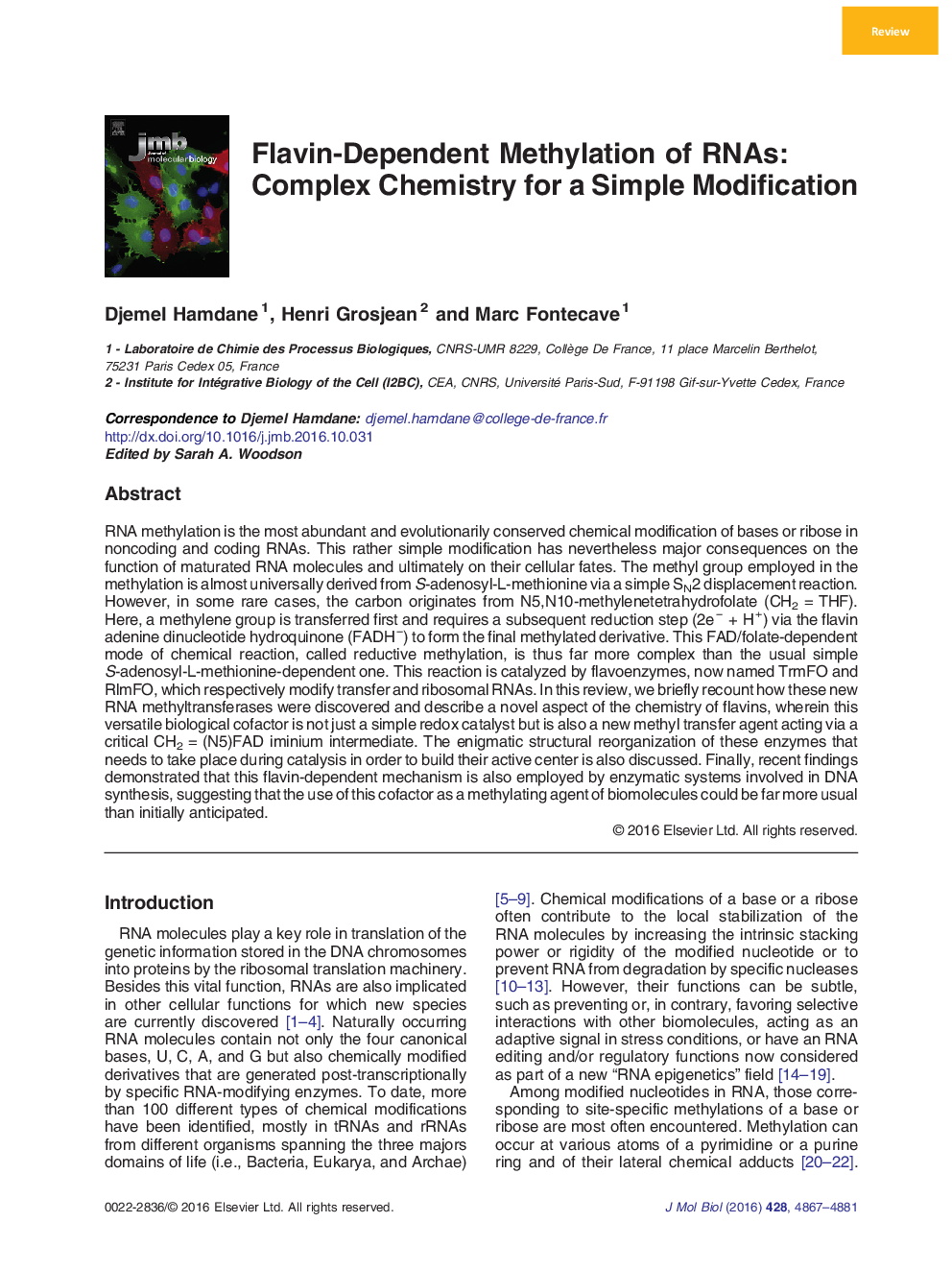| کد مقاله | کد نشریه | سال انتشار | مقاله انگلیسی | نسخه تمام متن |
|---|---|---|---|---|
| 5533306 | 1402114 | 2016 | 15 صفحه PDF | دانلود رایگان |

- Identification of an unprecedented, functional flavin-based methylating agent in tRNA, rRNA, and dUMP methyltransferases
- Flavin acts as a new methyl-transfer agent leading to a new facet of the biological chemistry of flavoenzymology.
- This review aims at describing how this new class of flavoenzymes was discovered and what is known about their chemical mechanisms and some of their structural characteristics.
RNA methylation is the most abundant and evolutionarily conserved chemical modification of bases or ribose in noncoding and coding RNAs. This rather simple modification has nevertheless major consequences on the function of maturated RNA molecules and ultimately on their cellular fates. The methyl group employed in the methylation is almost universally derived from S-adenosyl-L-methionine via a simple SN2 displacement reaction. However, in some rare cases, the carbon originates from N5,N10-methylenetetrahydrofolate (CH2 = THF). Here, a methylene group is transferred first and requires a subsequent reduction step (2eâ + H+) via the flavin adenine dinucleotide hydroquinone (FADHâ) to form the final methylated derivative. This FAD/folate-dependent mode of chemical reaction, called reductive methylation, is thus far more complex than the usual simple S-adenosyl-L-methionine-dependent one. This reaction is catalyzed by flavoenzymes, now named TrmFO and RlmFO, which respectively modify transfer and ribosomal RNAs. In this review, we briefly recount how these new RNA methyltransferases were discovered and describe a novel aspect of the chemistry of flavins, wherein this versatile biological cofactor is not just a simple redox catalyst but is also a new methyl transfer agent acting via a critical CH2 = (N5)FAD iminium intermediate. The enigmatic structural reorganization of these enzymes that needs to take place during catalysis in order to build their active center is also discussed. Finally, recent findings demonstrated that this flavin-dependent mechanism is also employed by enzymatic systems involved in DNA synthesis, suggesting that the use of this cofactor as a methylating agent of biomolecules could be far more usual than initially anticipated.
Graphical Abstract259
Journal: Journal of Molecular Biology - Volume 428, Issue 24, Part B, 4 December 2016, Pages 4867-4881